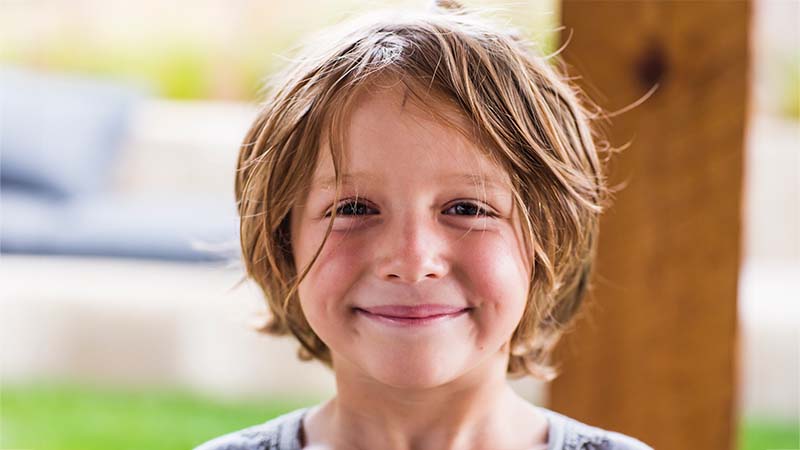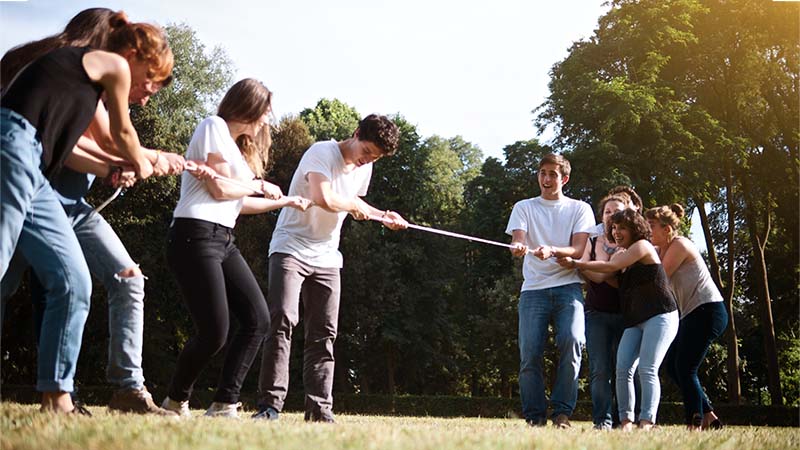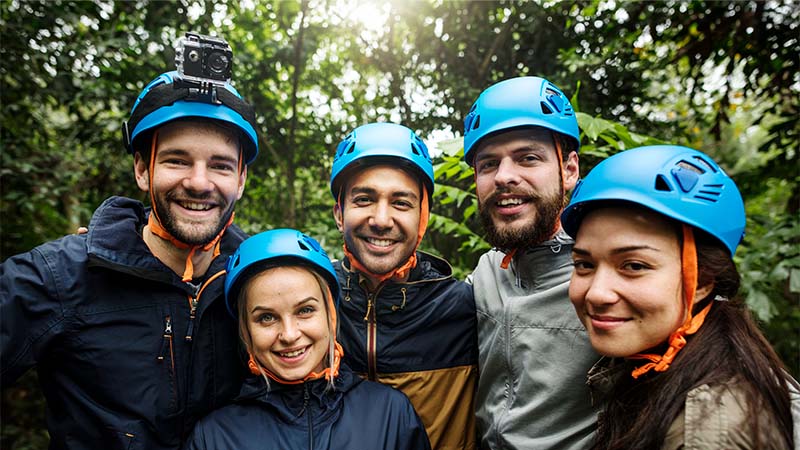Adventure therapy combines the healing power of nature with structured outdoor activities to promote personal growth, emotional healing, and team-building. This innovative approach to therapy has been increasingly integrated into camp programs, offering participants unique opportunities to overcome challenges, build resilience, and foster a deeper connection with the natural world.
The Essence of Adventure Therapy
Adventure therapy is a form of experiential therapy that utilizes outdoor activities, such as hiking, rock climbing, and kayaking, as tools for psychological healing and personal development. This therapeutic approach is grounded in the belief that engaging with nature and facing physical challenges can lead to significant emotional and mental health benefits.
Key Components of Adventure Therapy
Adventure therapy stands on several foundational pillars that contribute to its effectiveness in promoting psychological well-being and personal growth. Understanding these components is crucial for integrating adventure therapy into camp programs effectively.
- Experiential Learning: This is the heart of adventure therapy, where participants engage in activities that mirror real-life challenges. Through direct involvement, individuals gain insight into their behaviors, emotions, and thought processes, facilitating a deeper understanding of themselves and their interactions with others.
- Nature as a Co-Therapist: The natural environment plays a vital role in adventure therapy, offering a serene and healing setting that contrasts with the often chaotic urban landscapes many are accustomed to. Nature’s inherent unpredictability and beauty make it a powerful catalyst for personal discovery and emotional healing.
- Challenge by Choice: Central to adventure therapy is the principle that participants should choose the level of challenge they face. This empowers individuals to take ownership of their growth process, pushing their boundaries at a pace that feels right for them, thus promoting a sense of autonomy and self-efficacy.
- Physical Engagement: Adventure therapy involves physical activity, which is known to reduce stress, improve mood, and enhance overall physical health. The physical exertion required in activities like climbing or paddling also serves as a metaphor for emotional and psychological struggles, teaching participants that persistence through difficulty can lead to achievement and growth.
- Group Dynamics: Many adventure therapy activities are designed to be completed in groups, facilitating social interaction and the development of interpersonal skills. Participants learn to work as a team, communicate effectively, and support each other, which is particularly beneficial for those struggling with social anxiety or relationship issues.
- Reflection and Integration: After each activity, time is set aside for participants to reflect on their experiences and discuss them with the group. This reflection phase is crucial for integrating the lessons learned during the activities into everyday life, helping individuals apply new coping strategies and perspectives to their personal and professional challenges.
By weaving together these key components, adventure therapy provides a holistic approach to healing and personal development, leveraging the power of the outdoors to foster lasting change.
Benefits of Adventure Therapy
Adventure therapy offers a multitude of benefits that extend beyond the traditional therapy setting, reaching deep into the personal and social aspects of an individual’s life. Here’s how participants stand to gain from this engaging therapeutic approach:
- Improved Self-Esteem and Confidence: Successfully navigating outdoor challenges instills a sense of accomplishment, boosting participants’ self-esteem and confidence. This newfound belief in one’s abilities can translate to various life situations, fostering a more positive self-image.
- Enhanced Social Skills and Teamwork: Group activities in adventure therapy naturally require communication, collaboration, and mutual support. Participants learn the value of working together towards common goals, enhancing their social skills, and understanding the dynamics of effective teamwork.
- Increased Emotional Resilience: Facing and overcoming physical challenges in a controlled, supportive environment allows individuals to develop coping mechanisms for stress and adversity. This experience builds emotional resilience, equipping participants with the tools to handle life’s ups and downs more effectively.
- Strengthened Problem-Solving Abilities: Adventure therapy activities often present complex tasks that require critical thinking and creativity. Participants improve their problem-solving skills, learning to approach challenges in life with a more analytical and inventive mindset.
- Deepened Connection to Nature: Engaging with the natural world in a meaningful way fosters a deep connection to the environment. This bond can lead to increased environmental awareness, a greater appreciation for the outdoors, and a sense of peace and grounding.
- Promotion of Physical Health: The physical nature of adventure therapy activities contributes to improved overall physical health. Participants can experience enhanced fitness levels, increased physical activity, and the health benefits associated with being outdoors, such as improved mood and reduced stress levels.

By addressing the physical, emotional, and social dimensions of well-being, adventure therapy provides a holistic approach to personal growth and healing. The skills and insights gained through this immersive therapy form can have long-lasting impacts, enriching participants’ lives well beyond the duration of the camp program.
Integrating Adventure Therapy into Camp Programs
Incorporating adventure therapy into camp programs requires careful planning and a commitment to the safety and well-being of all participants. Here are some strategies to ensure a successful integration:
Training and Expertise
Ensuring the success and safety of adventure therapy within camp programs hinges on the expertise and preparedness of the facilitators. Here’s how camps can uphold high standards of training and expertise:
- Qualified Facilitators: Staff members leading adventure therapy activities should possess a dual skill set, combining proficiency in outdoor adventure skills with a solid understanding of therapeutic principles. Certifications in areas such as wilderness first aid, outdoor leadership, and specific adventure activities (like rock climbing or kayaking) are essential. Additionally, a background in psychology or counseling can greatly enhance the therapeutic impact of the program.
- Continuous Professional Development: Adventure therapy is an evolving field, and ongoing education is crucial for facilitators to stay current with the latest research, techniques, and safety standards. Camps should encourage and facilitate regular training workshops, conferences, and courses for their staff.
- Safety Protocols: Comprehensive safety protocols are non-negotiable in adventure therapy. Facilitators should be well-versed in risk assessment and management strategies specific to the outdoor activities they lead. This includes understanding the potential physical and psychological risks involved and having clear, practiced procedures in place for emergency situations.
- Therapeutic Training: Beyond outdoor skills, facilitators need training in therapeutic methodologies relevant to adventure therapy. This includes understanding group dynamics, therapeutic communication techniques, and how to facilitate reflection and processing sessions that help participants derive meaningful insights from their experiences.
- Cultural Competence: Facilitators should be trained in cultural competence to ensure they can effectively and sensitively work with participants from diverse backgrounds. This includes an awareness of different cultural attitudes towards mental health and outdoor activities, as well as an understanding of how to make programs inclusive and accessible to all.
By investing in the training and expertise of adventure therapy facilitators, camp programs can provide enriching experiences that are not only thrilling and enjoyable but also safe and profoundly impactful on a personal and emotional level.
Tailored Activities
Crafting a successful adventure therapy program within a camp setting involves creating activities that resonate with and challenge participants in meaningful ways. Here’s how to tailor activities to achieve therapeutic goals effectively:
- Assessment of Participants: Before designing the adventure therapy component of the camp, conduct a thorough assessment of participants. Understand their physical abilities, mental health backgrounds, and any specific emotional or psychological goals they (or their guardians) hope to achieve. This ensures that activities are accessible, appropriate, and aligned with participants’ needs.
- Variety of Challenges: Incorporate a diverse range of activities to engage different interests and challenge various aspects of personal growth. From more introspective and solitary activities like solo wilderness hikes to collaborative and dynamic challenges like team-building ropes courses, the variety ensures broad appeal and therapeutic impact.
- Progressive Difficulty: Design activities with a progression in difficulty, allowing participants to build confidence and skills gradually. Starting with less challenging tasks and progressively moving to more demanding ones helps participants experience a continuous sense of achievement and growth.
- Inclusivity and Accessibility: Ensure that activities are inclusive and accessible to all participants, regardless of physical ability or experience level. This might involve providing adaptive equipment for individuals with physical disabilities or offering alternative activities that achieve similar therapeutic objectives.
- Integration of Therapeutic Elements: Seamlessly integrate therapeutic elements into the activities. For example, incorporate reflective discussions after a challenging activity, use metaphors in nature to explore personal struggles, or facilitate mindfulness exercises in serene outdoor settings. This integration helps solidify the connection between the physical experience and the emotional or psychological insights gained.
- Feedback and Adaptation: After each activity, gather feedback from participants to understand their experiences and any challenges faced. Use this feedback to adapt future activities, ensuring they continue to meet the needs and preferences of the group effectively.
By thoughtfully tailoring adventure therapy activities to the participants’ needs, interests, and therapeutic goals, camp programs can create impactful and transformative experiences that foster personal growth, resilience, and a deepened connection with the natural world.
Therapeutic Framework
Creating a therapeutic framework is crucial for embedding meaningful psychological growth within the adventure therapy activities at camp. This framework serves as the backbone of the program, ensuring that each activity is not just an outdoor challenge but a step towards personal development and emotional healing.
- Setting Clear Therapeutic Goals: Begin by establishing clear, achievable therapeutic goals for the program and for each participant. These goals should be collaboratively set with participants when possible, ensuring they are personalized and resonate with their individual needs and aspirations. Goals can range from enhancing self-esteem, improving communication skills, to developing problem-solving strategies.
- Integrating Psychological Theory: The activities and their facilitation should be grounded in established psychological theories and practices, such as cognitive-behavioral therapy, mindfulness, or resilience theory. This ensures that the experiences are not only adventurous but also psychologically insightful and beneficial.
- Facilitated Reflection: A key component of the therapeutic framework is the inclusion of structured reflection periods before and after activities. This can involve group discussions, journaling, or one-on-one debriefs where participants are encouraged to reflect on their experiences, emotions, and the skills they employed or developed. Facilitators guide these reflections to help participants draw connections between their experiences and broader life contexts.
- Emotional Safety: Just as physical safety is paramount, creating an emotionally safe environment is essential for participants to open up and engage fully with the therapeutic aspects of the program. This includes fostering a supportive group atmosphere, ensuring confidentiality, and respecting individual boundaries.
- Adaptability and Flexibility: The therapeutic framework should be adaptable, allowing facilitators to modify activities or approaches based on the group’s dynamics, individual participant needs, and unforeseen circumstances. This flexibility ensures that the program remains responsive and relevant to participants’ evolving experiences and emotions.
By establishing a strong therapeutic framework, adventure therapy programs can provide participants with a safe, supportive, and insightful environment where they can confront challenges, explore their potential, and achieve significant personal growth. This structured approach ensures that the adventure activities are not just exhilarating but also deeply transformative.

Sample Adventure Therapy Activities
Adventure therapy programs can include a wide range of activities tailored to the goals of the therapy and the abilities of the participants. Here are some examples that illustrate the versatility and potential of adventure therapy within camp programs:
Team-Building Exercises
- Ropes Courses: Both high and low ropes courses challenge participants to navigate various obstacles while relying on team members for physical and emotional support. These courses are excellent for building trust, enhancing communication skills, and fostering a sense of community.
- Wilderness Expeditions: Multi-day wilderness expeditions, involving activities like backpacking or canoeing, require participants to work together in planning, navigating, and setting up camp. These expeditions strengthen group cohesion and teach valuable lessons in leadership, cooperation, and resilience.
Individual Challenges
- Rock Climbing: Climbing presents individual physical and mental challenges, encouraging participants to face their fears, set personal goals, and experience the satisfaction of personal achievement. It’s a powerful metaphor for overcoming life’s obstacles.
- Solo Nature Walks: Guided solo walks, often conducted in silence, allow participants to reflect on personal issues, connect deeply with nature, and experience solitude in a supportive context. This activity can be particularly effective for promoting mindfulness and self-awareness.
Nature-Connection Activities
- Mindfulness in Nature: Activities designed to enhance mindfulness can include guided meditation in a serene natural setting, nature photography focusing on the small details of the environment, or nature journaling to capture personal reflections and observations.
- Survival Skills Workshops: Teaching participants basic survival skills such as fire-making, shelter-building, or navigation not only provides practical knowledge but also boosts self-confidence and fosters a deeper connection and respect for nature.
Therapeutic Storytelling
- Storytelling Around the Campfire: Sharing personal stories in a supportive group setting can be a powerful way to open up about personal challenges, share victories, and build empathy and understanding within the group. This activity can be particularly effective for processing emotions and fostering a sense of community.
Creative Expressions
- Nature Art Projects: Engaging participants in creating art using natural materials found in their surroundings can be a therapeutic outlet for expressing emotions and fostering creativity. Projects can range from simple nature mandalas to more complex environmental art installations.
These activities, when facilitated with a therapeutic intent and structured reflection, can lead to profound personal insights, emotional growth, and enhanced social connections. The key is to choose and adapt activities that align with the therapeutic goals of the program and meet the needs and abilities of the participants, ensuring a safe, inclusive, and impactful adventure therapy experience.
Integrating adventure therapy into camp programs offers a dynamic and impactful way to support emotional and psychological growth. By harnessing the challenges and tranquility of the natural world, adventure therapy provides a unique and powerful context for healing, learning, and connection. As camp programs continue to evolve, incorporating these outdoor challenges will not only enrich the camping experience but also equip participants with valuable life skills and lasting personal insights.
